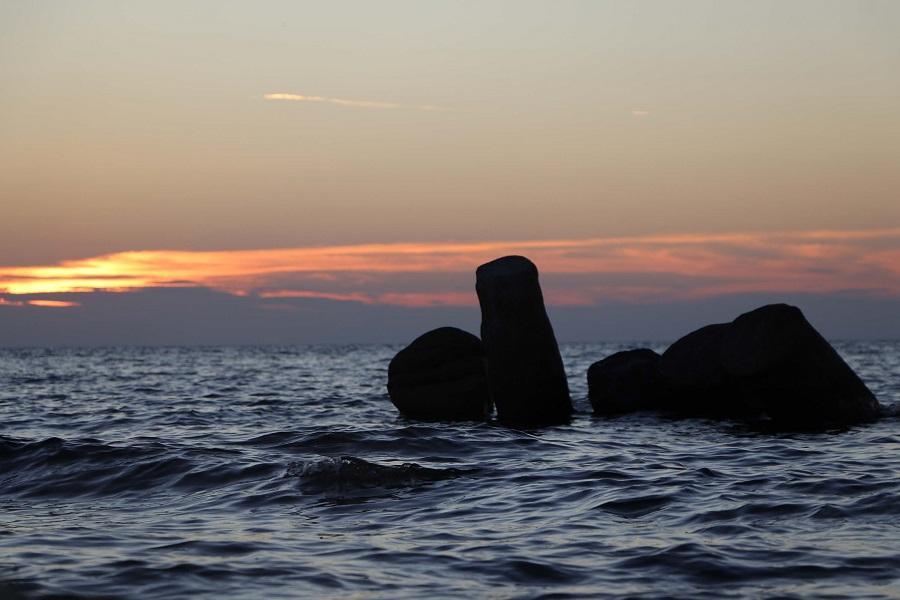
The inner and outer ports of the ancient city of Alexandria Troas in the northwestern province of Çanakkale now contribute to tourism with its heart-shaped pink lake and magnificent granite columns.
The inner port draws attention with its heart-shaped pink lake and the outer port with huge granite columns. It turned into a lake in the past when it lost its connection with the sea and due to the natural conditions through time, the port took the shape of a heart.
The 2,000-year-old ancient port has become one of the eight pink lakes in the world today, as the salty water inside turns pink at certain times of the year. Due to the color and its shape, it has become a center of tourist attraction.
The outer port draws attention thanks to the remnants of the giant granite columns, which were exported to many countries in the past. The granite columns were the most important factor in the enrichment of the ancient city and today they are contributing toward tourism.
It is possible to see these granite columns at a distance from the sea due to which the site is becoming a place of great tourist attraction. After spending the day swimming in the sea among these magnificent 2,000-year-old columns, many people immortalize these moments with the photos taken during the sunset view in the evening.
Head of the Alexandria Troas ancient city excavations, Professor Erhan Öztepe pointed out that the inner and outer ports were important trade centers not only for the ancient city but also for the North Aegean. He said that the granite columns with a length of 12 meters and a weight of more than 50 tons were once exported to many countries at the time.
Öztepe said that beginning with the prehistoric period, the relationship between man and the sea began to have a commercial meaning with the process of building ships in the Bronze Age, and this commercial relationship has evolved and developed until today.
Highlighting the importance of the ports and its importance in the Roman era, he said, “The point that this trade reaches on land is the ancient ports, which got bigger and bigger in the Roman Age.”

“We see that the ancient city of Alexandria Troas, where we have been carrying out excavations for a while, was one of the important Roman settlements and ports, known in the North Aegean today,” Öztepe added.
Noting that the port of the ancient city consists of an inner and outer port, Öztepe said, “The most important factor that made the port of Alexandria Troas important in this period and contributed to the growth of the city was the trade carried out from this port.”
Stating that the ruins that have survived until today can be viewed on the sea and under the water, he said, “The huge columns obtained from the granite beds around Çığrı Mountain, 10 kilometers behind the ancient city, were exported from here to the western Mediterranean countries, Spain, Tarragona, Italy, Greece, the western coast of Anatolia, Cyprus Island, and the eastern Mediterranean coast, from which the city gained great economic strength.”
Öztepe pointed out that another factor that makes the port important is that Saint Paul, mentioned in the Bible as an apostle of Christ, had used this port during his trips in the first century.
Noting that though today, we do not have a chance to see its importance and old commercial activities in ancient times, Öztepe said that the inner port part continued to attract the attention of visitors.
“We see that the interest continues to increase today due to the heart-shaped lake getting pink in late September and early October.”